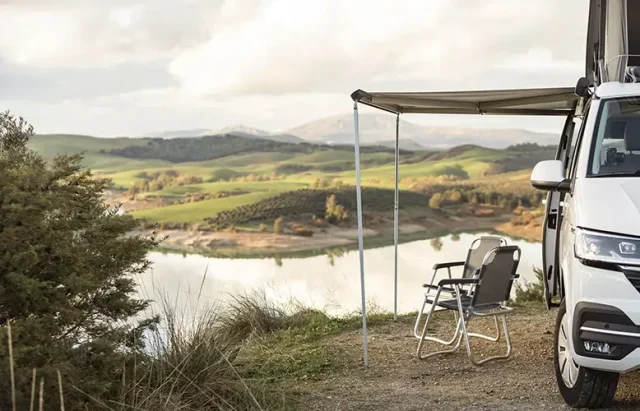
Going on a long campervan adventure across New Zealand is a great way to immerse yourself in the country’s stunning landscapes. NZ has plenty of routes that showcase its historical and natural wonders, and exploring them in a cosy vehicle makes the experience all the more enjoyable.
When preparing for such a road trip, however, you must make sure that you plan carefully to maximise comfort, safety, and efficiency while on the road. Managing your fuel is one of these essential aspects, but many tend to overlook it and instead shift their focus to packing, browsing for sightseeing spots, or bringing entertainment.
A lot of people often think that a full tank of fuel is enough to carry them through the journey, but in reality, various factors can affect consumption in unexpected ways while you’re on the road. For instance, navigating through hilly or mountainous terrain requires more engine power, resulting in increased fuel usage.
As such, you’ll want to be mindful of how you approach your campervan journey; it can make a significant difference to your overall experience. Whether you’re driving your personal campervan or a campervan hire NZ locals trust, here are several practical tips to help you make the most of your fuel and enjoy a smoother trip:
1) Plan Your Route Efficiently
Careful route planning is fundamental to both saving fuel and making the most of your journey. Mapping your trip in a logical sequence helps avoid unnecessary backtracking and reduces the overall distance travelled. There are several tools and approaches you can use to chart the most efficient course. GPS systems or navigation apps, for instance, can identify the most efficient paths in seconds. They can also alert you to road closures, construction, or heavy traffic, allowing you to adjust your route in real time and avoid unnecessary delays.
Another strategy is to group nearby attractions together rather than making multiple trips across regions. This ensures that fuel is conserved and your time on the road is maximised.
When planning your route, consider the terrain and road type you’ll encounter. Highways, rural backroads, and steep hills have different demands on the engine, and understanding these factors can help you anticipate how your campervan will perform and how much fuel it may consume.
2) Optimise Vehicle Load
The amount and distribution of weight in your campervan can significantly affect fuel efficiency. Carrying unnecessary items adds strain to the engine, while unevenly distributed cargo influences handling and increases resistance.
That said, focus on essential items and pack them strategically to ensure that the vehicle remains balanced, which will improve stability and reduce fuel usage. For example, heavier items such as water containers or camping gear can be placed low and near the centre of the van. This way, the vehicle maintains a lower centre of gravity, improving handling and reducing extra effort from the engine.
Furthermore, if your campervan has storage upgrades like roof racks, it’s best to remove them if you don’t plan to use them on your journey. Taking them off allows the vehicle to cut through the air more efficiently, reducing aerodynamic drag and the fuel consumption that comes with it.
3) Drive Smoothly
How you drive has one of the most direct impacts on fuel consumption. Driving in a way that forces the engine to work harder increases fuel use and reduces efficiency. As such, maintaining a steady speed and avoiding sudden acceleration or harsh braking can reduce the load on the vehicle, enabling it to run smoothly.
Depending on the road conditions and topography, adjusting your driving style can improve fuel efficiency. On long, open stretches of road, for instance, use cruise control to help you maintain consistent fuel use. Should there be any traffic, slowing down gradually and keeping a safe distance will allow you to flow with moving vehicles, preventing frequent stops and starts—which is among the most fuel-intensive driving behaviours. These habits will not only help you conserve fuel but also enhance your safety, reduce wear on brakes and tyres, and make for a more enjoyable driving experience across New Zealand.
4) Avoid Idling
Leaving the engine running while waiting at rest stops, campgrounds, or during short breaks may seem convenient, but it’s unnecessary and wasteful. Idling consumes fuel, which is inefficient and can quickly increase overall consumption on a long journey. As such, turning off the engine whenever you expect to remain stationary for more than a minute or two helps conserve fuel, and it also lowers emissions and wear on engine components.
While it may feel inconvenient to restart the engine, many modern campervan engines are designed to restart efficiently, so switching off the engine during short stops is generally more economical than leaving it running.
5) Monitor Tyre Pressure Regularly
Lastly, maintaining the correct tyre pressure is a simple yet highly effective way to save fuel. When the tyres’ pressure is kept at the manufacturer’s recommended levels, they perform at their best, providing optimal grip, stability, and fuel efficiency. Driving with under-inflated tyres increases rolling resistance, making the engine work harder and consume more fuel. With over-inflated tyres, on the other hand, grip is reduced and tyre wear becomes uneven, which can compromise vehicle safety and handling.
Don’t forget to check your tyre pressure before and even during each leg of your journey. Monitoring tyre pressure regularly ensures that your vehicle will operate efficiently and that the tyres experience less wear. This is especially important when driving a campervan across New Zealand, as factors like the vehicle’s weight, road conditions, and terrain can place additional demands on the tyres.
All in all, taking steps to manage fuel effectively can make a long campervan journey across New Zealand more economical and less stressful. Even small adjustments in planning and driving can reduce unnecessary consumption and make all the difference in the enjoyment factor of your trip. Try these tips so that you can avoid worrying about your fuel running low and put your full focus on the open road.





